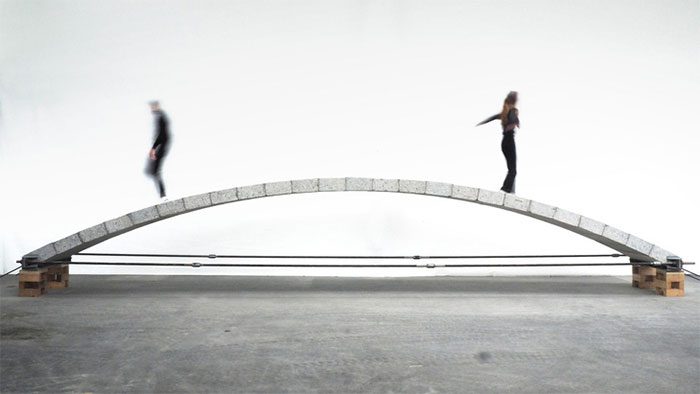A New Type of Concrete That Can Absorb Pollutants and Decompose Them into Harmless Substances.
Concrete is a material used in most modern construction projects around the world.
A research team from the Korean Institute of Construction Technology (KICT) has developed a type of photocatalytic concrete. This concrete relies on its outer coating to absorb pollutants from the air.

Concrete bridge – (Photo: EPFL NEWS).
The outer layer of the concrete is made from titanium dioxide, which, when activated by sunlight, generates reactive oxygen species (ROS). These ROS react with common pollutants such as nitrogen oxides and ammonia, breaking them down into harmless substances.
So far, the main concern for researchers has been how to best incorporate titanium dioxide (TiO2) into concrete, and they have tested several methods to find the optimal solution.
Currently, the research team has chosen to spray their TiO2 solution directly onto standard concrete. This creates an outer shell that can directly interact with pollutants while maintaining the structural integrity of the concrete.
In automobile tunnels, exhaust fumes from vehicles create air pollution levels that are 1,000 times denser than the air outside. However, scientists believe that this photocatalytic concrete solution can not only help clean dark tunnels but also purify the surrounding outdoor air.
The research team brought their concrete to a tunnel and placed artificial lights to activate the outer layer. After leaving the concrete in the tunnel for 24 hours, they observed an 18% reduction in nitrogen oxide levels.
Additionally, the concrete also converts nitrogen oxides into a salt form that accumulates at the base of the walls. Tunnel wash water or rain can wash this salt away into the drainage system.
The research team hopes to continue enhancing the efficiency of the concrete before bringing it to market.
The study was published in the journal KSCE, focusing on environmental and civil engineering research.




















































